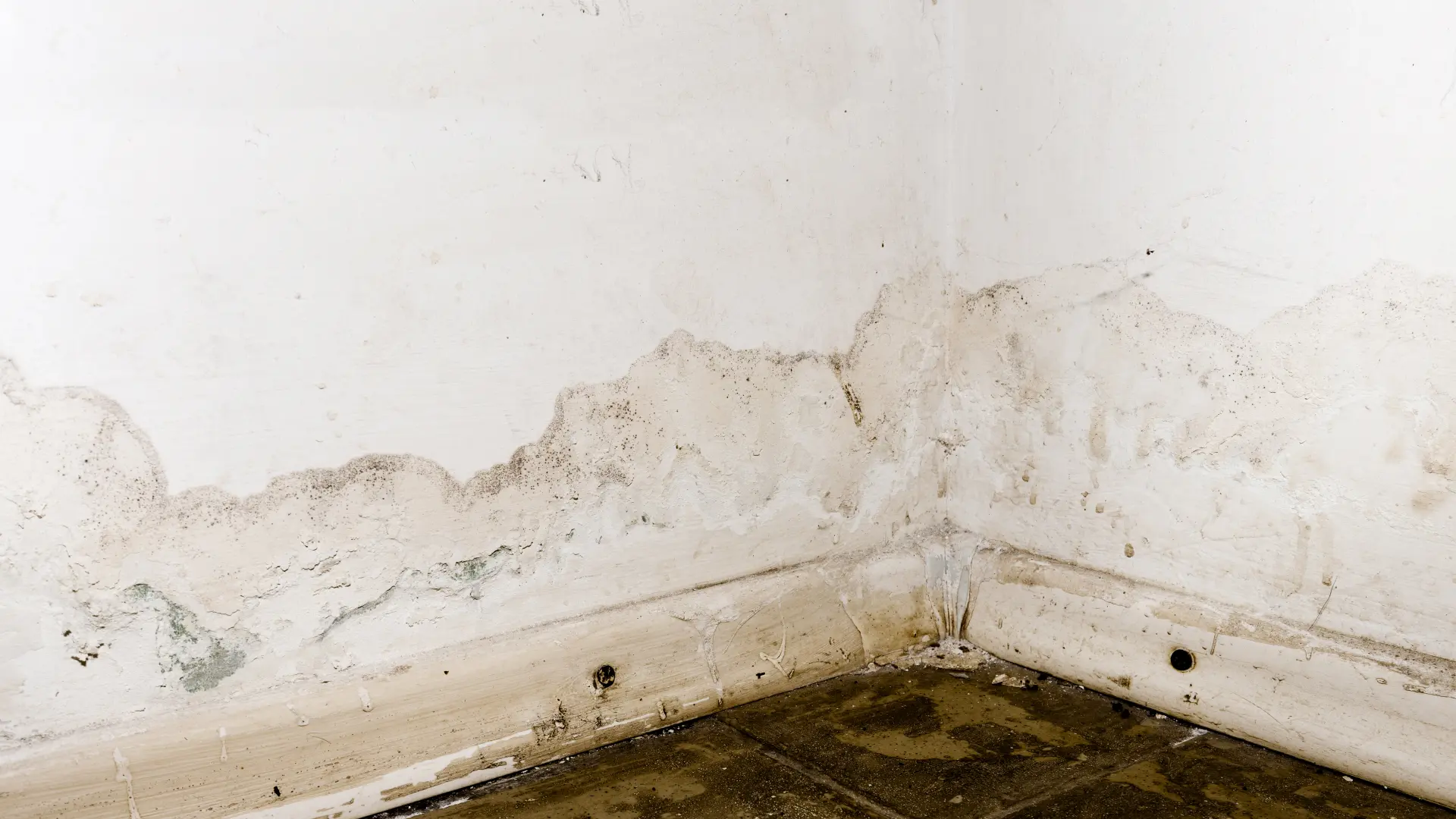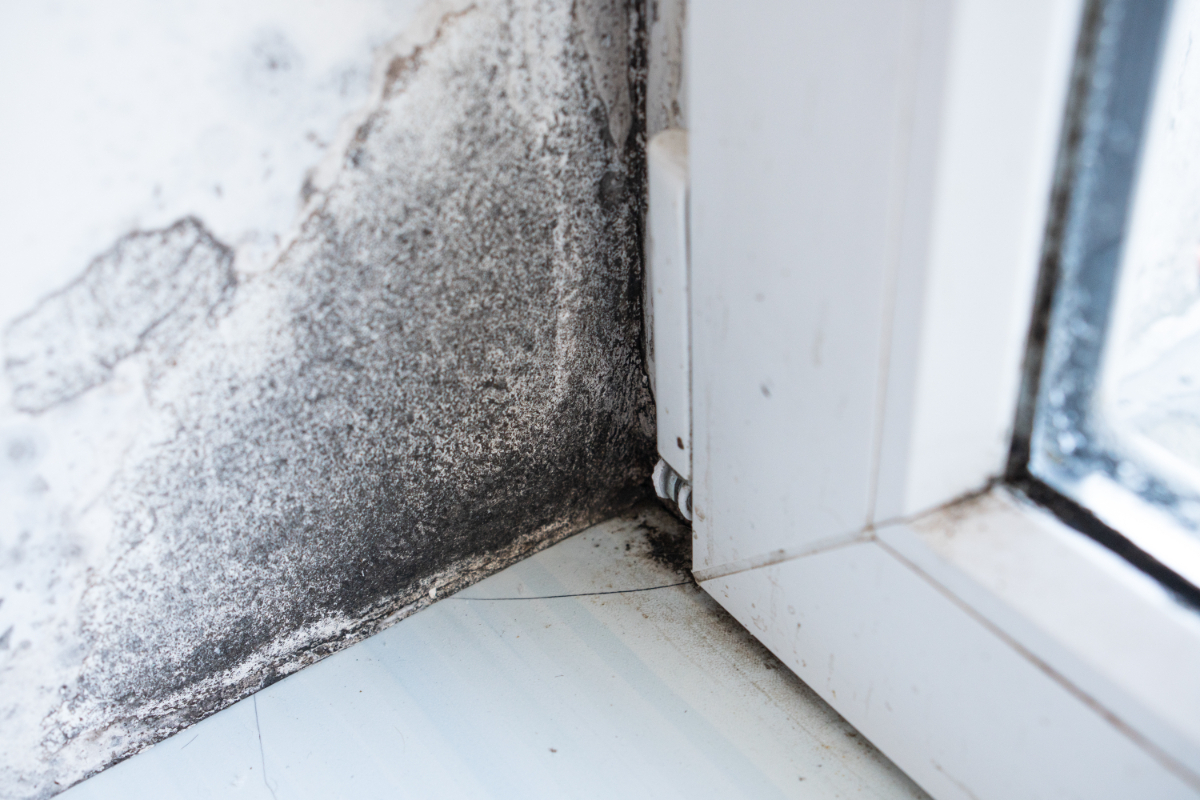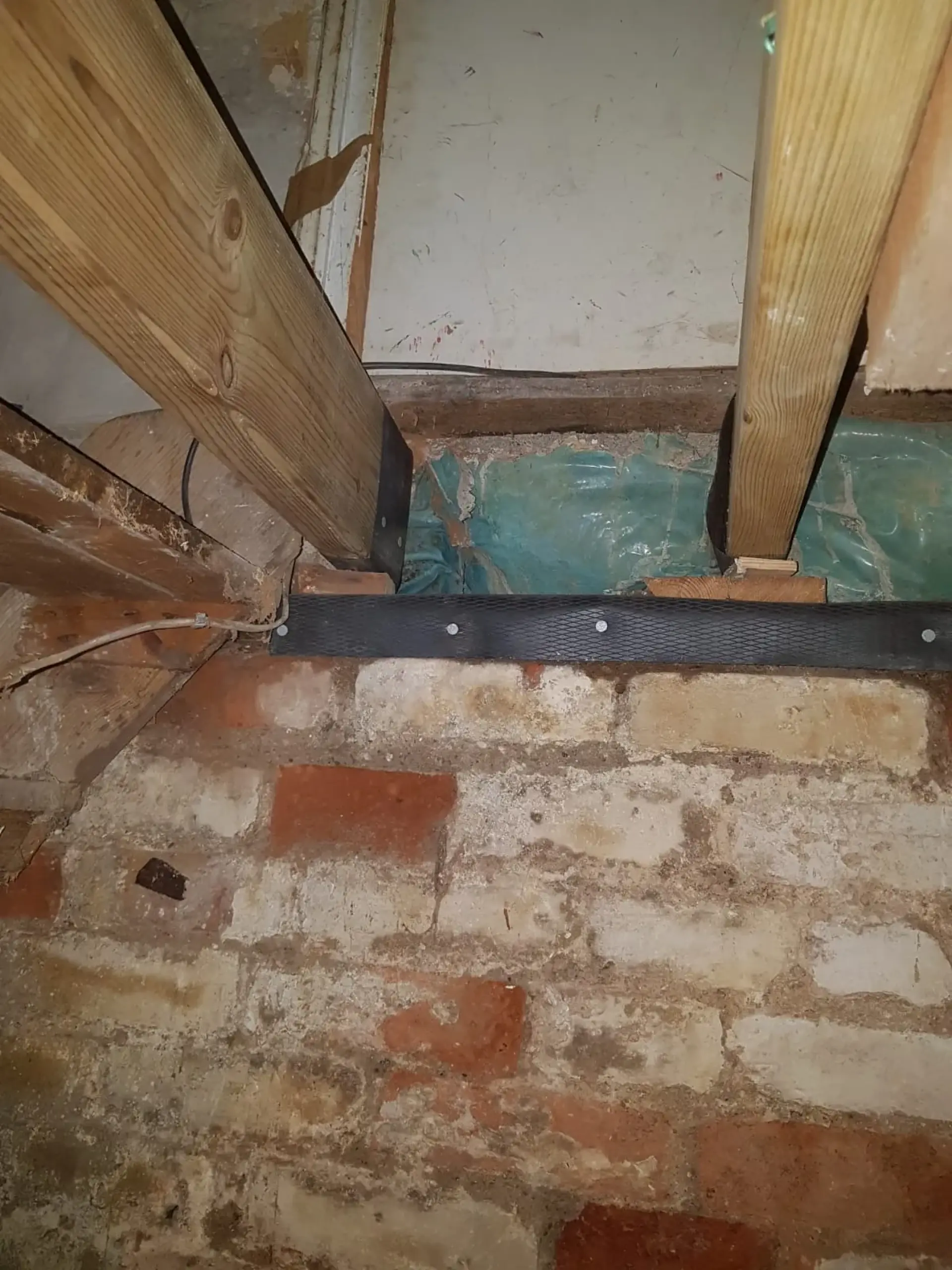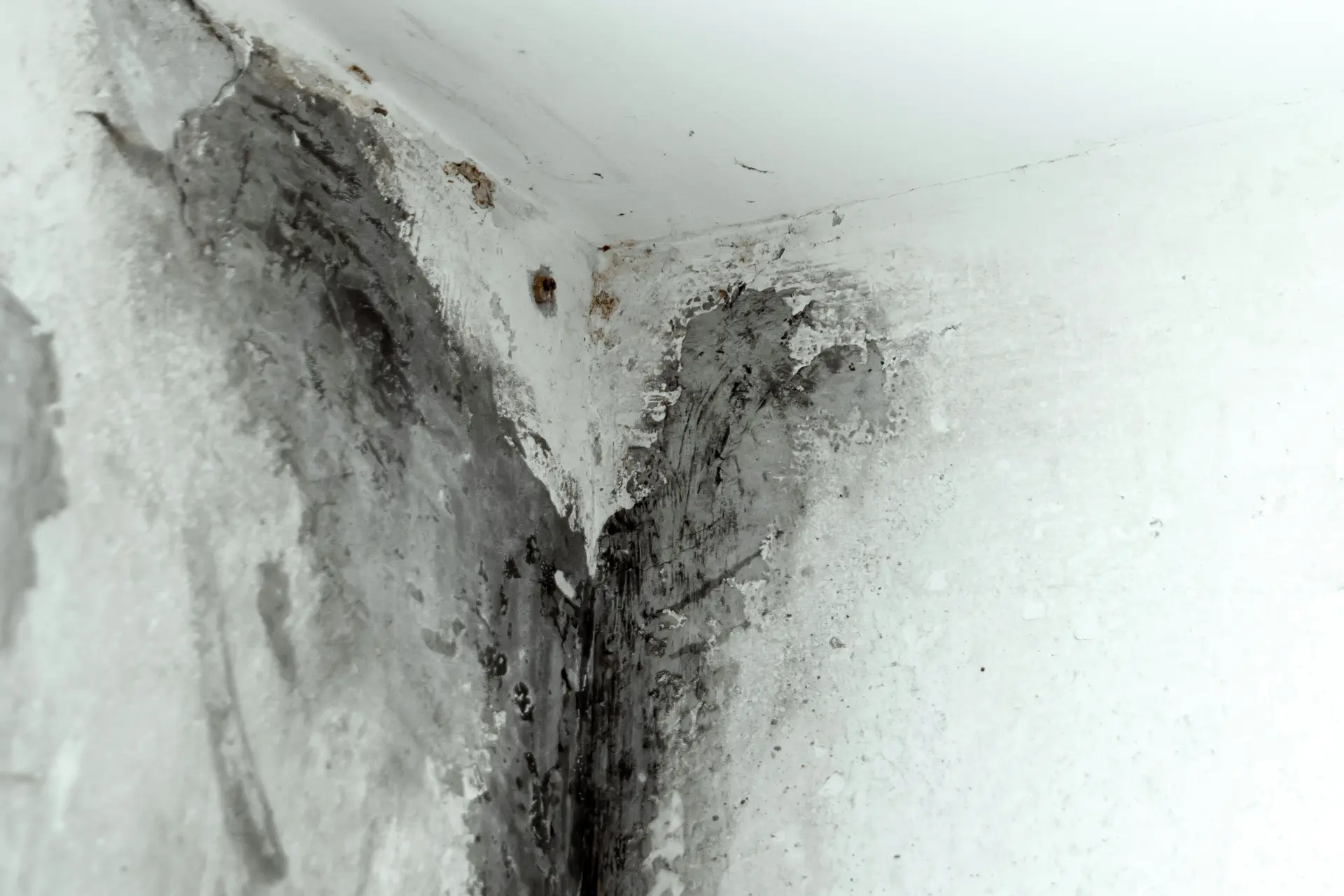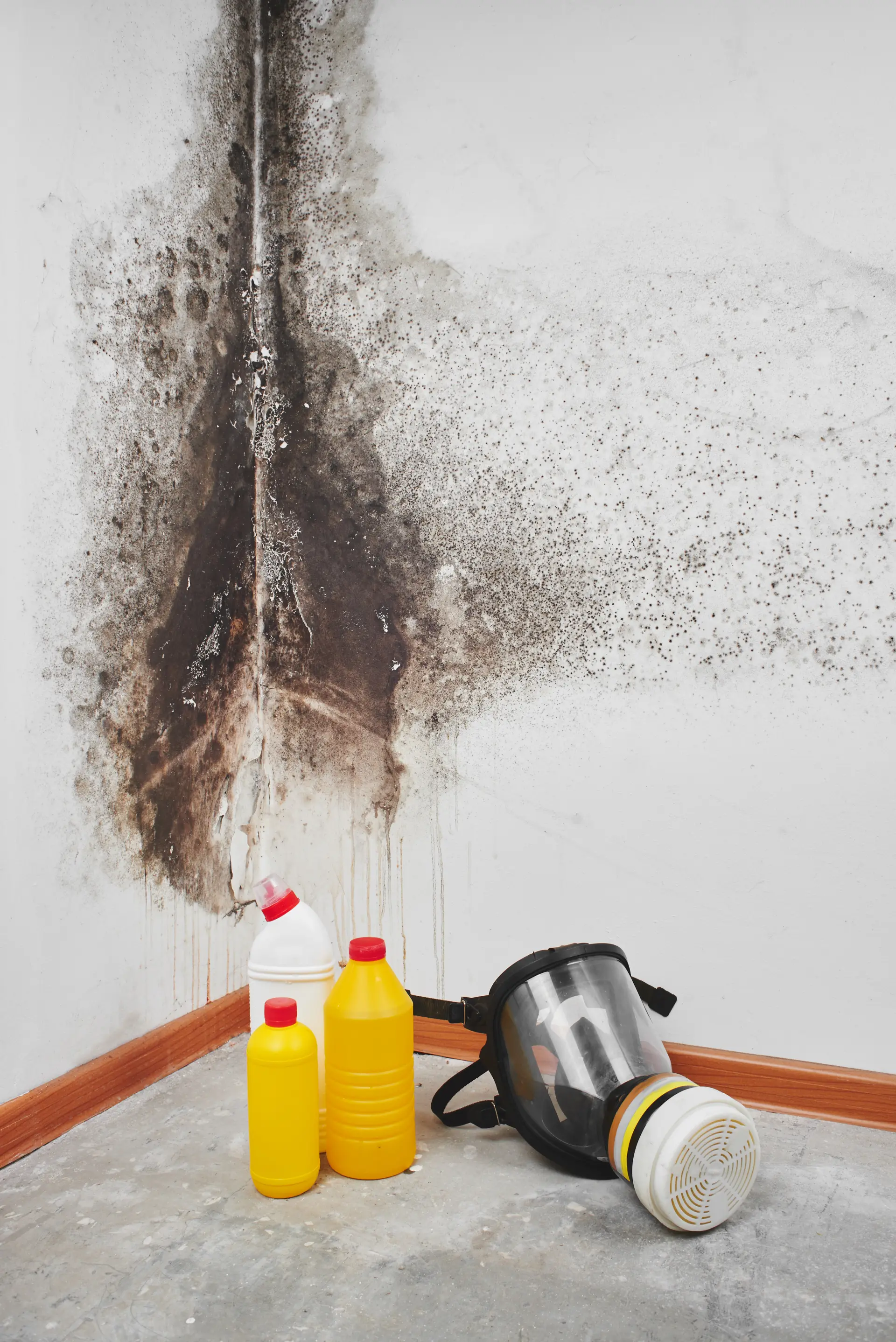Black mould around windows or corners
Black mould around windows or in cold corners is one of the most common damp issues you’ll spot during viewings. Most of the time, black mould is caused by condensation. The tell-tale signs of black mould include speckled black staining on the silicone around window frames and along the bottom edges of sashes. You might also notice streaming windows in the morning, musty odours, flaking paint, or swollen skirting boards. Single glazing, metal frames, poor insulation, and furniture that's pushed tight into cold walls can all make black mould even worse.
Mould releases spores that can irritate your airways and aggravate your asthma or allergies. Even if you’re not sensitive, rooms with chronic condensation will feel colder and will be harder to heat. While you’re viewing, you should check if the windows have trickle vents and if they’re open. You should also scan the corners of the walls, ceilings and floors for black mould. It's crucial to remember that black mould is just a by-product of condensation and ventilation issues. If you’re keen on the property, a damp survey can confirm the source of the moisture and help you fix the issue at its root cause.
Signs of rising damp inside the property
Rising damp forms when water from the ground moves upwards into a property’s walls and leaves tide marks behind. The plaster above this line may be discoloured, bubbling, or crumbling, and the skirting boards might show signs of decay, softness, or staining. You might also notice small grains of salt on the walls or floor from where the moisture has evaporated.
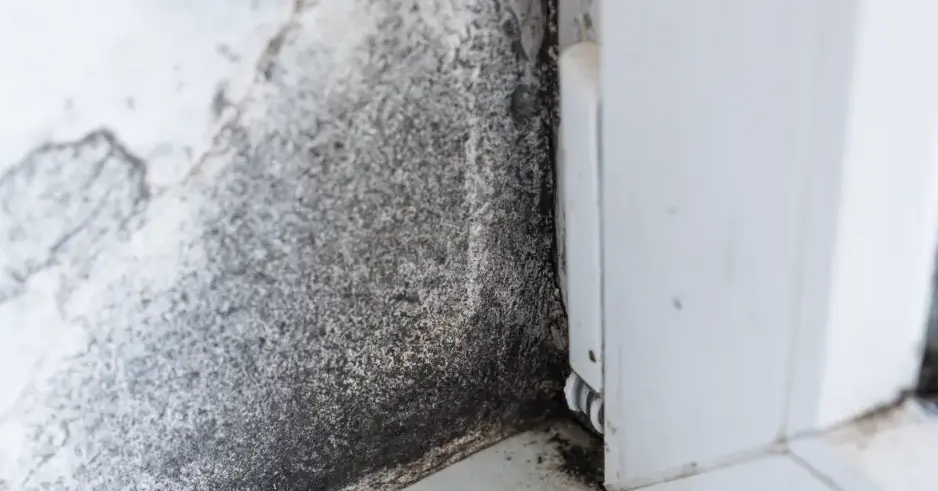
In homes with timber floors, rising damp can cause the floor to warp, cup, or have gaps. On solid floors, you might see lifting floor coverings, damp patches, or smell a musty odour coming from near the walls.
Rising damp is more than a cosmetic issue. Over time, it can weaken plaster, rot timber, corrode metal fixings, and damage your internal finishes.
Rising damp also creates the perfect conditions for mould to grow, which can worsen any existing respiratory issues and allergies. Rising damp can also affect your home's comfort and cause it to feel colder.
How to spot penetrating damp on walls
Penetrating damp occurs when water travels through the building and into the internal walls or ceilings. Unlike rising damp, penetrating damp can appear at any height and often worsens after wet weather. Irregular, map-shaped damp patches on walls or ceilings that darken or spread after rain are classic signs of penetrating damp.
As the water travels, it can discolour finishes and make your walls or ceilings appear yellow or brown, as well as causing paint to blister or flake. If you press the area gently and the plaster sounds hollow, crumbles, or feels soft, it suggests that the problem has been active for a while and isn't just a one-off.
Peeling or bubbling wallpaper and salt deposits beneath old paint are also signs that moisture is evaporating through the surface. Salts (efflorescence) leave a powdery crust behind as the water dries, which can stain the walls or ceilings and indicate that the moisture has spread.
Peeling paint or wallpaper due to moisture
Peeling paint or bubbling wallpaper is one of the easiest ways to spot a moisture problem within a property. When water seeps into the walls or ceilings, it breaks the bond between the finishes and the substrate, causing the paint to blister, flake or peel away. Moisture within a property is often accompanied by a musty smell, discolouration, powdery salt deposits and black mould. The best way to check for damp is to press the area lightly, and if the plaster sounds hollow or crumbles, moisture has likely de-bonded it.
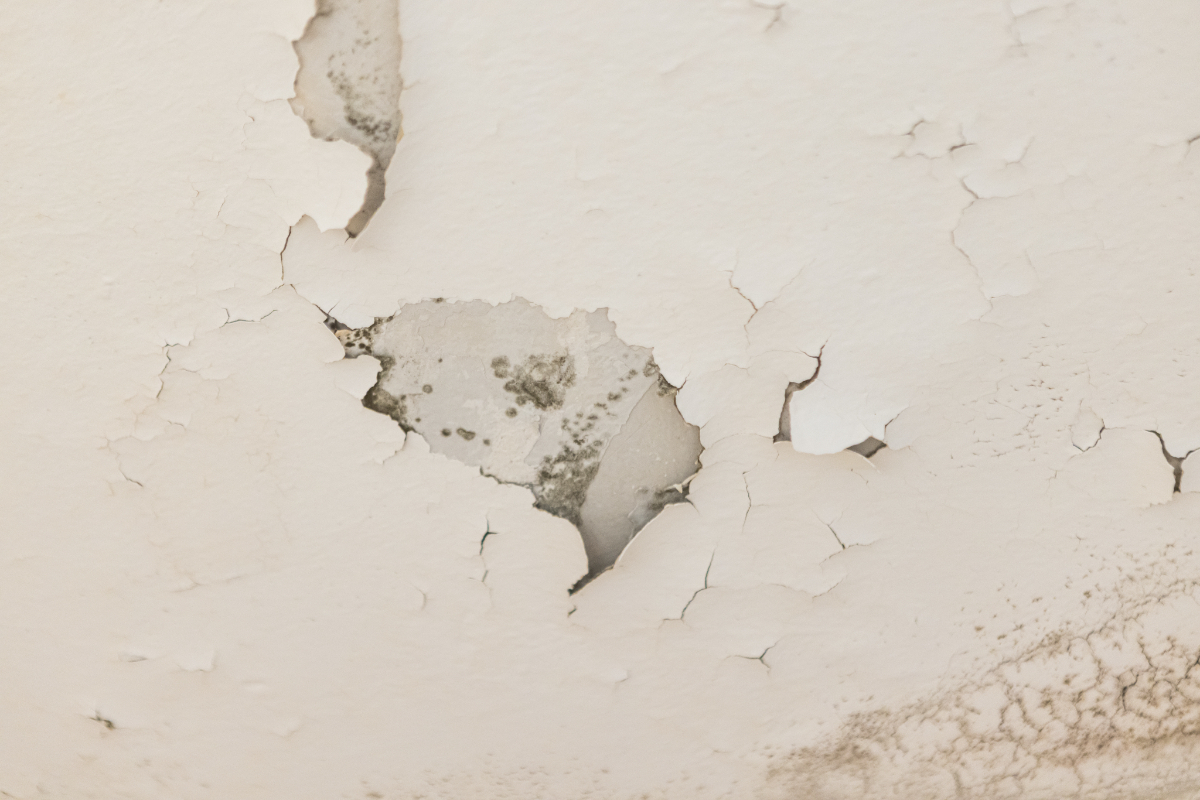
Moisture damage isn’t just cosmetic; wet walls lose heat faster, and the presence of mould can trigger allergies or asthma. Additionally, the time it takes to repair this issue can be extremely expensive and disruptive once you’ve moved in. Although fresh paint can temporarily mask this problem, it's best to have it removed entirely.
During viewings, you should look closely at the ceilings, floors, windows and skirting boards. Additionally, if you lift up a corner of loose wallpaper and there's salt underneath, it's likely that damp is present.
If you’re serious about buying the property, it's crucial to commission a damp survey to confirm the cause of the damp and have it professionally repaired before you buy.
At Above Water Damp Proofing Ltd, we provide professional damp surveys that can uncover hidden damp issues within UK properties. We can pinpoint condensation, penetrating damp, rising damp and more using moisture profiling, thermal imaging and general inspections.
